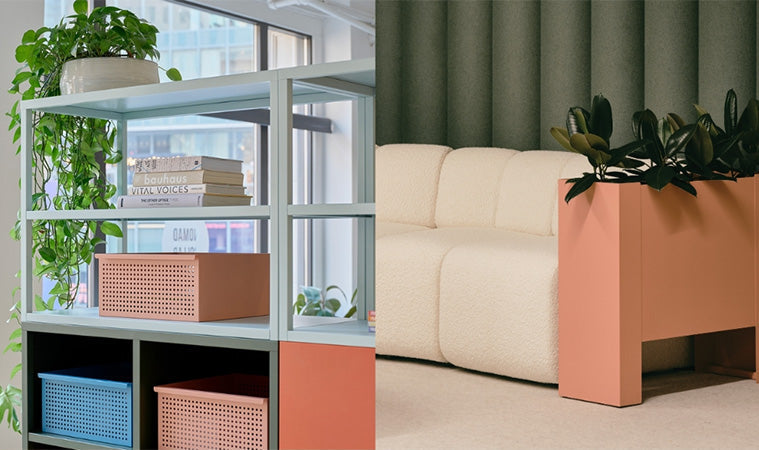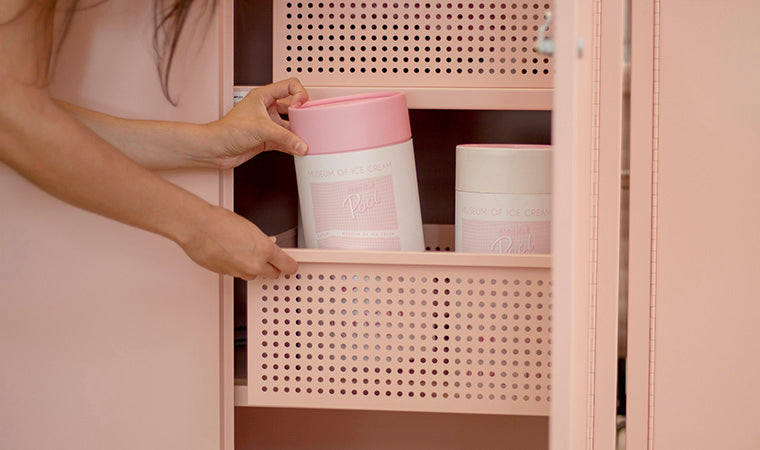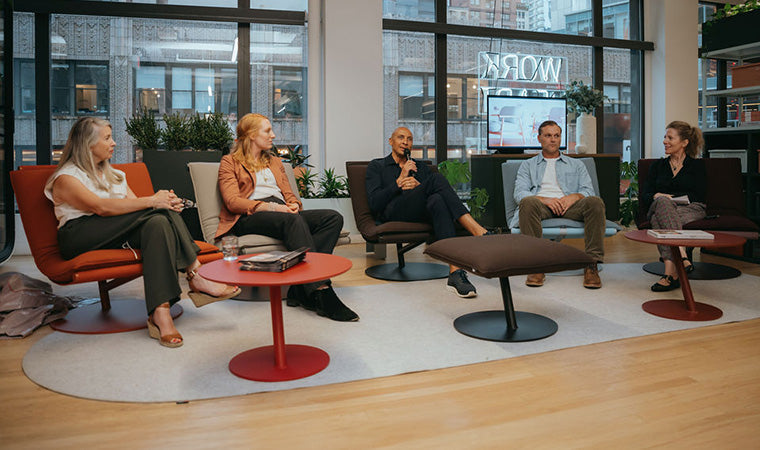We Heart Designers. And we love getting to know what drives and inspires them each day. Haley Nelson, Design Principal and National Interior Design Expertise Leader for HGA, is a standout within the industry. She is working to redefine ideas around design and how we approach projects. Haley believes that by pulling varying strengths across disciplines and geographies, we can work to build better places to work, live, and thrive.

What does it mean to be the National Interior Design Expertise Leader for HGA?
About a year ago, HGA launched a national practice of Interior Design with the goal to grow a diverse, strong discipline that is better connected across each of the project types we serve. To do this, we have three national leaders -- Paula Storsteen is our National Practice Leader, Lisa Macaluso is our National Business Development Leader, and I’m the National Expertise Leader. I love that we all represent different strengths and geographies across the firm. My role is about design, but intentionally framed around connecting expertise, strengths, and research to empower our interior designers to elevate their design solutions. We don’t believe in a singular design voice for the practice, so I see myself more as a coach and not a critic. I love being able to bring out the best in our teams allowing for more impactful design outcomes.
As a leader and educator of young designers, what are the most important ideas that you try to impart to your team?
I believe that one of the most important things I can impart is the “why” behind everything we do. Every project has a unique recipe of stakeholders, vision, challenges, and opportunities that make it difficult to simply repeat. That’s what I love about interior design, that it’s a different puzzle every time. Because of that, it can be easy to lose the nuance that makes a project successful if you don’t understand the “why.”

What inspired you to go into design?
As a child, I loved art and you could always find me drawing in a sketchbook or spending afternoons on a variety of hands-on crafts. I recognized early on that I could move things around in my bedroom and it would make me feel different ways - when my desk faced the window, I loved that I could see the trees in the backyard when I was drawing or when my bed was positioned so that I couldn’t see the door when I woke up in the middle of the night, I would feel scared. This spatial awareness was complemented by my love of graphic design. I would collectGourmetmagazine covers for their minimalistic design and inspiring palettes and used this love as I served as the editor of my high school yearbook. All of those experiences came together for me in interior design. When I went to college, my interior design program was knitted together with architecture and landscape architecture as well - this is where I learned the language to articulate how space could make someone feel and impact the human experience. I was sold!
Is there any advice would you give your younger self?
I would tell my young designer self to ask as many questions as possible! I was quite curious when I first started in the profession and sometimes thought my questions weren't "big" enough to ask. I had some amazing mentors who took the time to explain things to me and I quickly realized I needed to pay that forward as I mentored others and that no question is too small!

How would you describe your specific approach to interior design?
My process comes down to a few key tenets: co-creating a project vision, developing a deep understanding of the people the space will serve, and pushing design ideas beyond what has been done before. I love being able to dig into the drivers for the project, discover the moments that matter, and establish a common design vocabulary. This is the north star that guides the rest of the project.
I also think it’s of the highest importance to understand the people the space will serve, whether those are known stakeholders or those that we might be forgetting. As we begin space planning and shaping the flow and spatial relationships, I’m pausing to question how we might be making someone’s life easier or more difficult with those choices. The location of the mother’s room in an office might “fit” in the floor plan, but when we consider the experience of walking to that room past a row of judging eyes from private offices and the orientation that puts the door in full view of her co-workers, we might plan to locate that room in a more discreet location so she can feel comfortable using that space.
Finally, I love being able to think beyond things that we’ve seen before to inspire new, creative solutions. Our world is flooded with access to images of beautiful spaces and shows on TV make design look as easy as a 24-hour overhaul with slick 3D animations. As our clients and users become more exposed to design, the ideas that resonate with them often become the direction they give to their interior designers. I love when clients get excited about design, but I use that as a tool to uncover why they like them -- see, there’s me going after the “why” again! I use what we learn about how they see design or the vision we set at the onset of the project to inspire new ways to bring that design language to life.
Is there a project that you are particularly proud of?
I recently completed the new HGA office in San Diego. This was an interesting project, not only because we were designing for other designers (anyone who has taken on their own office projects knows the challenges of this task!), but because it was planned for a historic Mission-style brewery that was adapted for use as office space with rich architectural character that was meant to be a short term incubator for growth into a new city for HGA. The project embraced the concept of a canvas, which acts as a backdrop to support the art of an office — the people and the work that they create. Because the concept was focused on people, the team prioritized flexibility, user control, sustainability, and well-being as central tenants of the design solution. The short term nature of the project also reinforced the sustainability goals, which prioritized a limited material palette to balance the essential without being over-built or ornamented to reduce the embodied carbon it contained. I’m proud of this project because it demonstrates the beauty of restraint in defining what is essential for an office and challenges some of the flashy, trendy ideas in office space.

You mentioned prioritizing sustainability, how does this inform your process?
Sustainability is a foundational aspect to my design philosophy. As an interior designer, I know that I have the ability to shape the spaces where people spend their lives and that each decision I make can be in support of climate and human health. Learning about and advocating for advancements in healthier and sustainable materials has been a passion for me over my career and something that I am always striving to improve with every project and every selection. I’ve focused much of my career on interior renovation projects and I’m mindful of the fact that I’m often inheriting the project from a designer before me. Renovations can have a huge impact on the environment and I believe it’s the responsibility of the interior designer to take that baton and be the best stewards we can be with it. And then plan to pass the baton to the next designer that might inherit it afterwards. Understanding that as design professionals we are all collectively working on a larger philosophical design project together shows how connected the industry really is. The next frontier for interior designers is to learn more about the embodied carbon of our work -- which can be far greater than that of a new building because of the frequency of interior renovation projects -- and strive for ways to lessen the burden of our design solutions on the environment. Metropolis Magazine, ASID, IIDA, and other industry associations have done great work on this front and I would encourage everyone to check out the Interior Design Pledge for Positive Impact:https://metropolismag.com/interior-design-pledge/.
What about storage? What role does it play in the modern workplace?
I think storage in the traditional sense is evolving. Storage is no longer the knee-jerk reaction to earmark space for things that people are too afraid to get rid of. I heard from many co-workers and clients that they learned they had so much “stuff” stored at their offices that they realized coming out of working from home that they didn’t really need to hold onto. Much of our filing switched to cloud-based storage that might have been lagging. However, storage is now about community and supporting how things get done in a flexible working model. I see storage as a way to carve out individual space -- whether in the form of day-use storage to place personal items, or as lockers to leave keyboards and coffee mugs that will get used the next time someone is in the office. Storage can also support teams of people working together in the workplace -- from team-specific resources, project materials, or personalizing the identity of that group, which may be a big driver for why those people would want to come into the office anyway.

What inspires you most?
I love to travel and my husband and I prioritize getting to new places every year. I find so much inspiration in getting a new perspective on the world. Recently we visited Mexico City and it was an inspiration overload in the best way -- from the architecture to the food, the texture of the city, and the unabashed use of color and pattern. I was particularly inspired by our visit to Luis Barragán’s Casa Pedregal. Barragán is a master of shaping light and using color to enhance the unique experience of each room in the home. It was amazing to see how the diffused light picked up the variety of plaster colors and how he often painted every wall and ceiling surface a different color without it feeling overwhelming. The most inspiring aspect was that it was a home and not a museum, so you really felt how lived-in, authentic, and timeless the design was, even over 70 years after it was designed.




